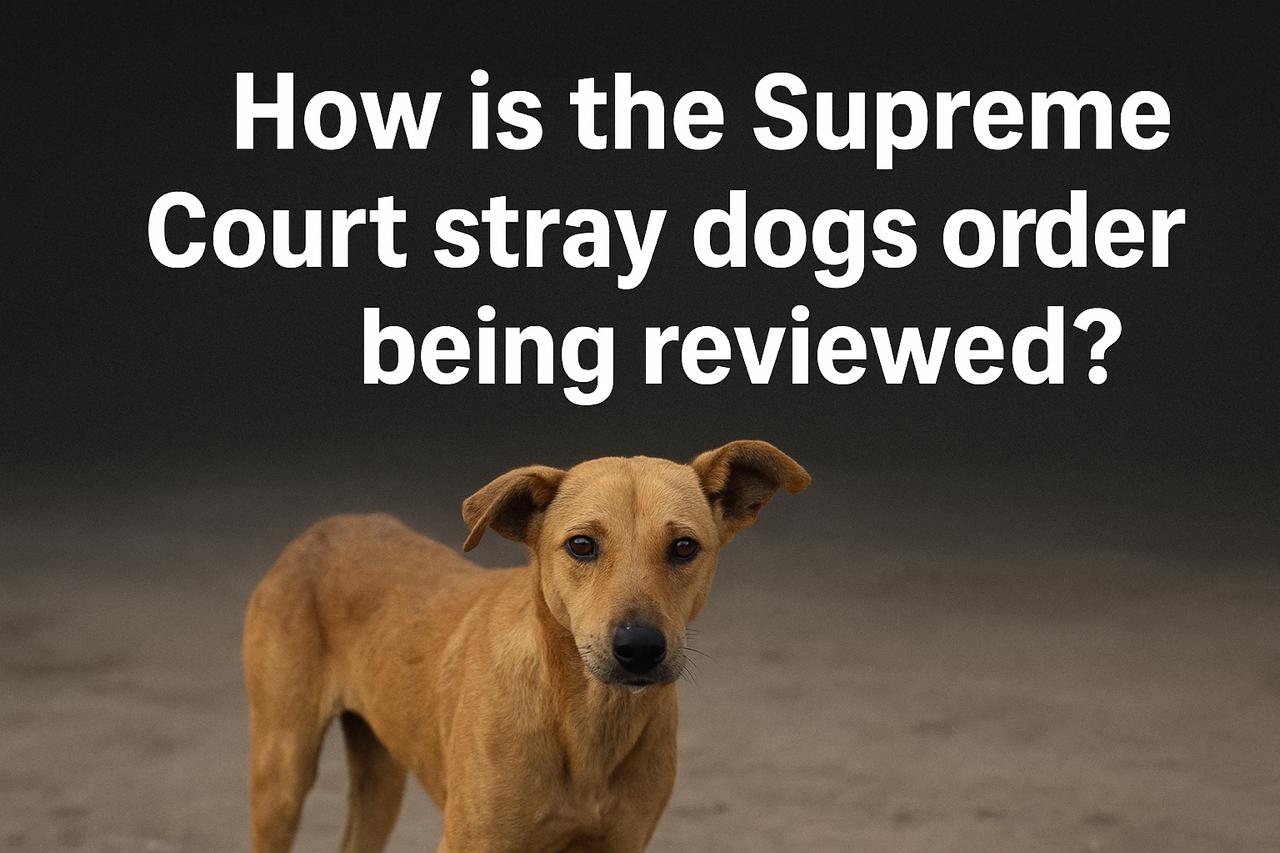Introduction
When the Supreme Court delivered its order on August 11, 2025, telling Delhi-NCR officials to catch all stray dogs in just six to eight weeks and keep them in shelters for good, it didn’t just stay in courtrooms. The move immediately drew fierce pushback from animal rights advocates, city authorities, and regular people. Framed as a safety step to curb dog bites, the plan quickly got slammed as unrealistic, unscientific, and even cruel. As it stands, the Court has decided to refer the whole issue for urgent review by a larger three-judge bench, though the original instructions haven’t been put on hold yet. What was framed as a safety measure against dog bites has been criticised as unscientific, impractical, and potentially inhumane. In an unexpected turn, the Court itself has now referred the matter to a new three-judge bench for urgent hearing but without staying its own controversial directions.
Questions Over the Speed and Scope of the Supreme Court Stray Dogs Order
During the August 14 hearing, the Bench led by Justices Vikram Nath, Sandeep Mehta, and N.V. Anjaria reserved its order on pleas seeking a stay. Senior advocates Kapil Sibal, A.M. Singhvi, and Sidharth Luthra collectively warned that the Supreme Court stray dogs order “puts the horse before the cart” attempting mass confinement without first ensuring shelters, veterinary staff, or humane sterilisation protocols are in place. Critics argue that a blanket removal within a fixed timeframe risks both public chaos and severe animal suffering.
Lack of Consultation Undermines the Supreme Court Stray Dogs Order
A recurring criticism in the courtroom was the complete lack of stakeholder consultation. As Singhvi pointed out, the August 11 order was issued based solely on an amicus curiae’s report, with no input from NGOs, veterinarians, or municipal experts. In doing so, the Court’s directions seem to go around the Animal Birth Control Rules, 2023. Those rules, meant to guide how cities deal with stray dogs, focus on sterilizing, vaccinating, and rehabilitating dogs instead of locking them away permanently. Skipping these steps risks overfilling shelters, and could set off new problems for both the animals and the people charged with their care. By sidelining these rules, the Supreme Court stray dogs order not only undermines existing law but risks replacing one public problem with another overcrowded, disease-prone shelters.
Outdated Data Weakens the Supreme Court Stray Dogs Order
Policy, even judicial policy, is only as good as the data that informs it. Yet, the numbers guiding the Supreme Court stray dogs order come from outdated sources the last nationwide stray dog census was in 2019, with Delhi’s own figures dating back to 2016. One big problem with any policy here is the numbers: the last count of stray dogs in Delhi is from 2016, and nationally, the figures are just as patchy. In places like Tamil Nadu, the numbers don’t really add up 8.3 lakh reported dog bites in 2019, but only about 4.4 lakh stray dogs recorded at the time. That’s nearly two bites per stray dog, hinting the real stray dog population might be far higher, or that reporting and record-keeping are all over the place. Without fresh, reliable data, it’s tough to know exactly what’s needed, or which solutions might actually work.
Balancing Safety and Welfare Under the Supreme Court Stray Dogs Order
The scale of the challenge is alarming: India sees over 37 lakh dog bite cases a year, about 10,000 bites every single day, with several dozen deaths reported from rabies. For supporters of the Court’s move, the sheer scale of the numbers is reason enough to hit hard and fast. But critics see it differently. They say problems this big need smarter, longer-term fixes things like humane sterilisation, more aggressive vaccination drives, and cleaner city waste systems. In their view, that’s how you keep the streets safer for people and kinder for animals, without forcing a choice between the two.
Conclusion
The debate over the Supreme Court stray dogs order is not just about dogs; it is about how a nation balances urgency with due process, safety with compassion, and judicial power with democratic consultation. By referring the case to a larger bench, the Court has signalled that the matter is far from settled. The question now is not whether something should be done about stray dog attacks but whether India will choose a solution grounded in law, science, and humanity, or continue down a path of reactive measures that risk creating new problems while trying to solve old ones.
Author Information:
By Karthikeyan Ganesan, a law student from KKC College of Law, reporting on law and technology for Nyayasphere. Karthikeyan always likes to stay updated with current trends and important information regarding the law and cases across the country.

